
| Home | The Achual People | Forests and Farms | Medicinal Plants and Traditions | Art and Handcrafts | About Our Collaborative | Contact or Donate |
||||||||||||||||||||||||||||||||||||||
Forests and Farms
|
||||||||||||||||||||||||||||||||||||||||||||
| Project Summary | Project Strategy | Project Work and Plans | Project Benefits | Project Accomplishments |
PROJECT SUMMARY
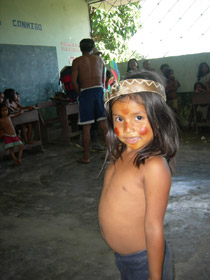
In 2005, together with Amazon Wakani and RedPAL-Peru(www.redpalperu.com), the Achuales created a four year project to stabilize their native community through more efficient means of food production, restoration of the land and development of technical and business expertise to manage the forest and market their products. The Rainforest Protection Achual Sustainable Harvests project is the primary effort currently implemented in The Achual Village. It is an alliance among RedPAL-Peru, an NGO of permaculture experts skilled in Amazon sustainability projects, Amazon Wakani with a 14 year history of sustaining Achual medicinal plant practices in the Peruvian Amazon and the Achual Tribal council and people. This 4 year project involves the whole community in collaboration with RedPAL-Peru and Amazon Wakani, using ecologically appropriate agricultural technologies that will protect their rainforest environment ensure the continuation of their native culture, implement reforestation as well as produce an economic means of survival in an encroaching modern world.

Tito, Bea( Amazon Wakani),Eulogio,
Limber (RedPAL), Ramon, Ramberto
PROJECT STRATEGY
An Achual Council called the Apuchichañawai acts as the board of this project. Two members of the council serve as leaders, RedPAL-Peru provides technical skills, and administration of day to day activities, Amazon Wakani ensures that direction and compliance is aligned with project goals, tribal customs and oversee’s as a fiscal agent.
The system designed will produce tropical fruits with maximum biodiversity, as well as the reforestation of depleted areas. Community stability is being reinforced with this permanent and diverse process of food and income security, and the four thousand native status acres will be protected from deforestation and overuse.
PROJECT WORK AND PLANS
The project is being carried out over four years and includes training and practices in Agroforestry, Accountancy, and Business Skills, coming into fruition in stages over the course of four years:
Year One(2006):
A Plant Nursery to germinate camu camu was developed and three hectares (approximately seven and a half acres) of soil to sow the camu camu was prepared and planted. Camu camu is a tropical fruit rich in vitamin C and is used in ice creams, beverages, and nutritional supplements. We built the first sturcture for the Achual Cultural Center and initiated programs directed by the tribal Apu (Ramón Arahuanaza) who is rich in the knowledge, culture, customs and the traditions of his people.
 Camu Camu Seeds |
 Germinating Nursery |
 Building Cultural Center |
 Plantation Preparation |
Year Two (2007):
The nursery was extended and the cleared area of the community was planted with tropical aguaje (Mauritia flexuosa) fruit trees and diverse species of hard wood which have a valuable price in the market of Iquitos. Eighteen members of the community worked in rotational shifts on the project (Plantations, Cultural Center and Nursery). The whole community was able to continue training in agroforestry and two members of the council initiated project leader training, so that they can manage the future of the project. Achual adults learned new techniques for harvesting aguaje crops which maintain the standing trees. Traditional harvesting involves destroying the tree to get to its fruit. Ten years ago they could obtain these valuable fruits by walking a short distance. Now it takes 24 hours to find these trees in the forest. We also registered with GPS (Global Positioning Systems) the existent natural plantations of aguaje to avoid the clear cutting of these trees by neighbouring residents who destroy this palm for their valuable and delicious fruit to sell in the market. We continued to 1. coordinate with the Apu for the expansion of program offerings in the Cultural Center where the people learn how to balance their cosmovision Achual with 21st century savvy; 2. Coordinated with the tribal project council in the development of the project and training in leadership skills; 3. Maintained the camu camu nursery and plantation; 4. expanded the cultural center with the building of the “traditional tombo”, all people learned the heritage and craft of traditional techniques.
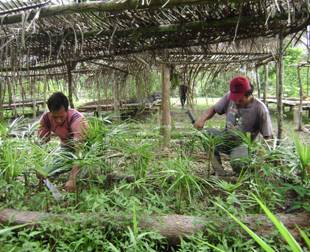 Expanded Nursery |
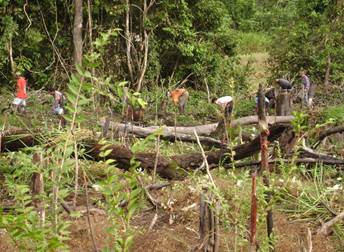 Camu Camu Plantation Being Maintained |
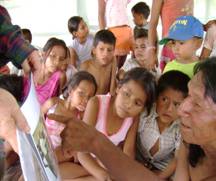 Apu Ramon teaching his heritage to children |
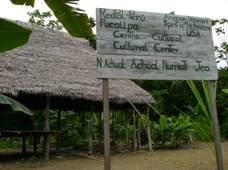 Traditional Tombo |
 2nd Apu Sergio, teaching Achual/Achuar |
Year Three (2008)
The nurseries and the camu camu, aguaji and hardwoods plantations (totaling 15 acres) were maintained. This is a very labor intensive process, as the vegetation grows high and thick in the rainforest and must be weeded continually in order to protect the crops. Germination of new plants in the nursery continued in order to sustain the plantations with forest crops. Education was continual during this period because the tribal members must be fully capable of taking over their own projects in the next two years. Through partnering with RedPAL-Peru experts and workshops the Achuales are becoming equipped with the skills and know how not only to manage and protect their lands, but to have the business savvy to market and sell their harvests, and to create an appropriate economic system for their village. During this third year the camu camu had its first bloom.
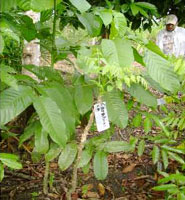 Hardwoods Nursery |
 RedPAL Director Providing Training |
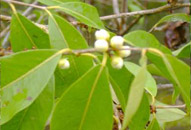 Camu Camu First Bloom |
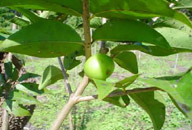 Camu Camu First Seed |
Year Four (2009):
Camu Camu will have bloomed sufficently to have its first production and during year five the the harvest will reach full production. Aguaje and hardwood plantings will be tended until they mature in year eight and nine, all maintenance activities will be in full force. Cultural Center programs will be solidified with the assistance of a bilingual (Achual/Spanish) teacher. The council will learn credit banking; some members will train in accountancy and project management. We are especially excited that an Achual economic system representing their traditional values will be married with a new, modern, communal monetary system to meet 21st century demands. Eighteen members of the community will continue to work in the nursery and fields in rotational shifts while reinforcing agroforestry skills. The young children will continue to be taught their heritage, and language. A field site will be established in the town of Iquitos to market and sell the harvests. Business training in Organic Certification, Market Distribution and Sales will be taught to ensure success. Economic systems, governance, banking accountancy, and agroforestry skills will be reinforced. Cultural Center programs will continue to be enhanced and expanded. Harvesting, distribution and sales will be accomplished.
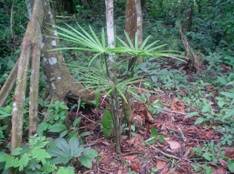 Aguaji planted and growing strong in forest |
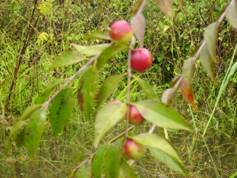 Camu Camu Fruits |
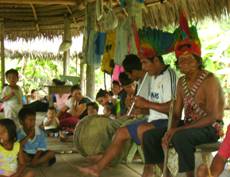 Cultural Center Activities |
Thereafter
The following years the camu camu will be in full production. The village will continue to manage and maintain their lands since they will now have the necessary skills and income to do so.
BENEFITS: Long term tribal stability and sustainability
Cultural Benefits
The cooperative agroforestry operations combined with a village economy can ensure the continuance of the community’s native traditions and enable them to sell their agroforest products in the market.
Economic Benefits
The ability to manage and replenish their resources protects their four thousand Rainforest acres from outside industry exploitation. The tribe has contacted buyers in Iquitos for their camu camu harvests at an estimated communal income of 42,000 soles per year. Additional income sources will mature in later years. Beginning year seven the fruits of the Aguagi will be sold in the market place. The diverse hardwoods estimated income will begin in year nine
PROJECT ACCOMPLISHMENTS PHOTOS
 Learning project leadership |
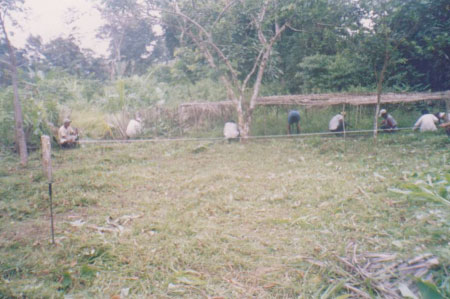 Extending the nursery |
 Good black soil for nursery |
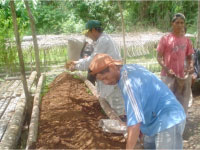 Working in nursery |
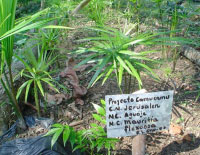 Aguaje |
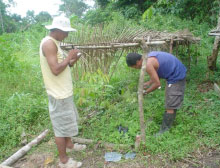 Learning permaculture |
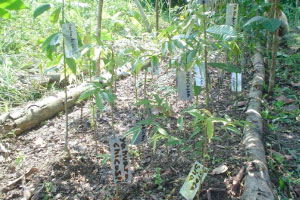 Hardwoods |
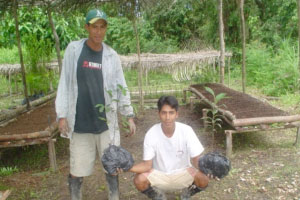 Plants ready for transplanting to plantation |
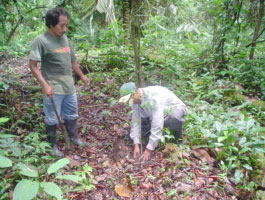 Transplanting in forest |
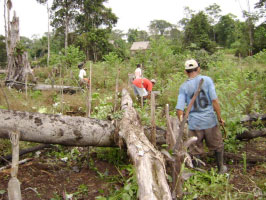 Weeding camu camu plantation |
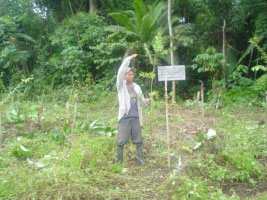 camu camu growing |
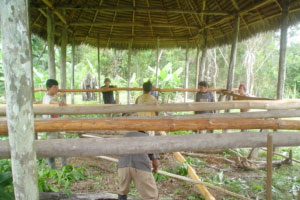 Building traditional tombo |
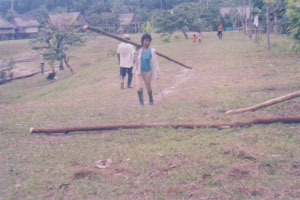 Women working |
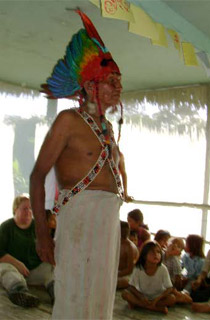 Children in cultural center / Apu |
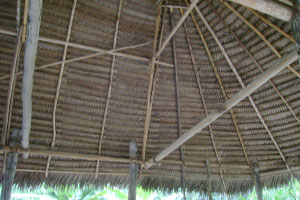 Roof of traditional tombo |
 Apu sharing heritage / cultural center |
 Traditional tombo |
